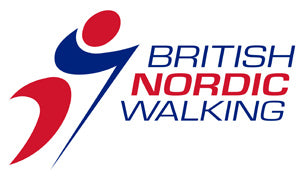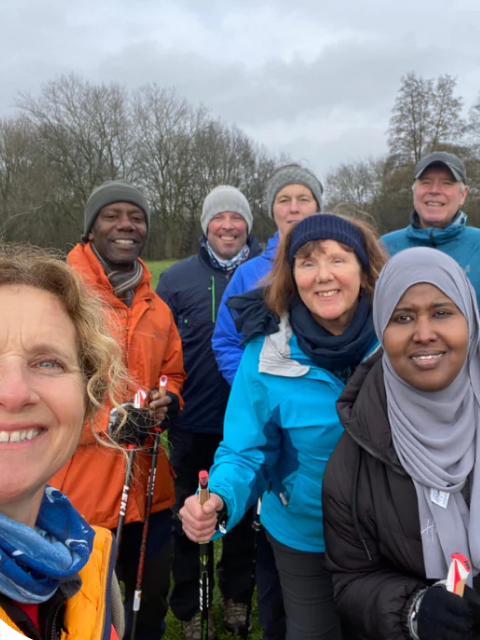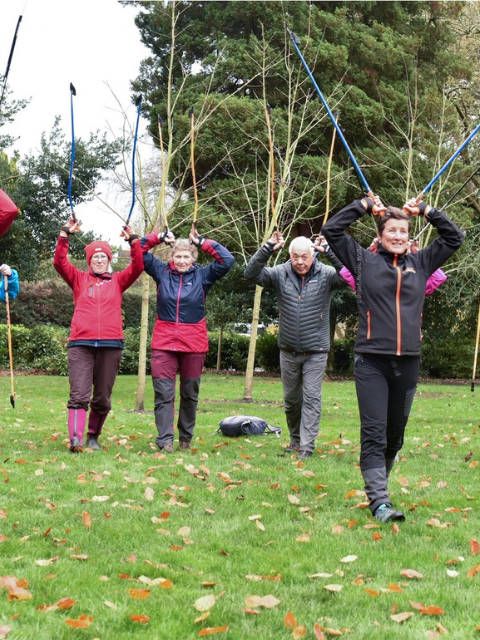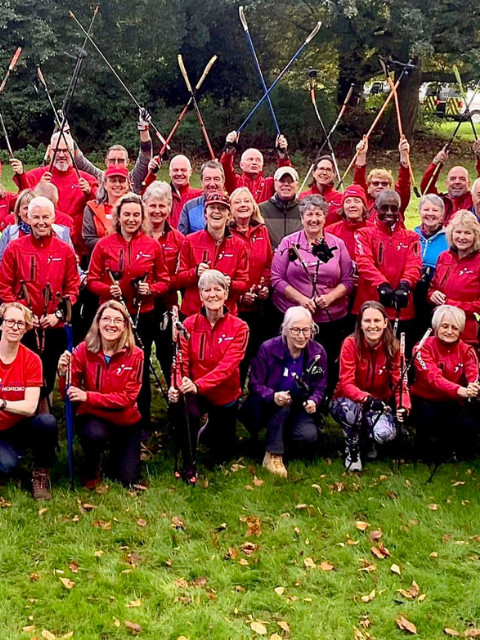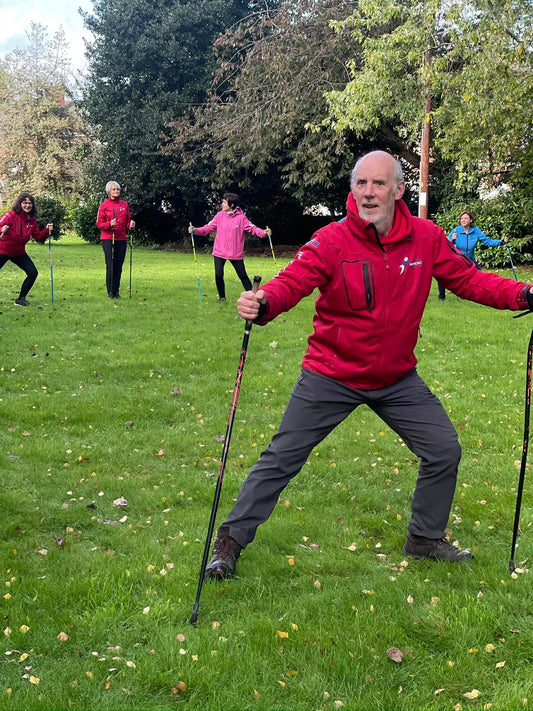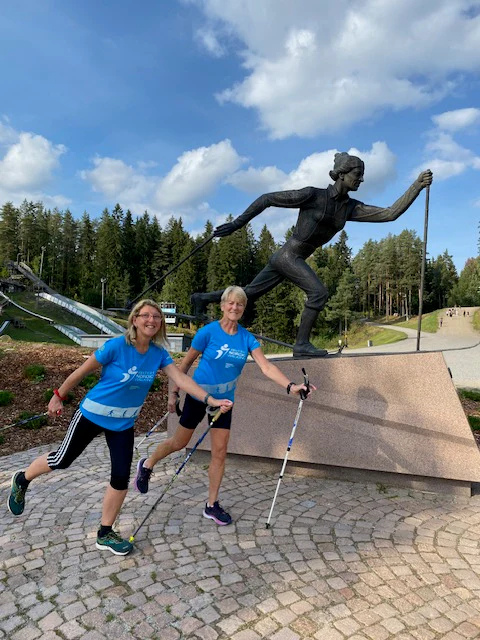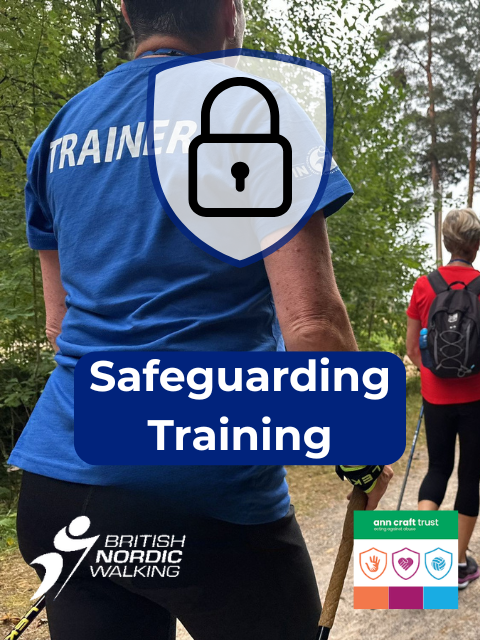Why is Nordic Walking effective for Parkinson's

Nordic Walking is a popular activity for people living with Parkinson’s and many of our instructors either run groups especially for local Parkinson’s UK branches or teach people living with Parkinson’s in their regular classes.
Why is Nordic Walking an effective and enjoyable exercise for people with Parkinson’s?
Nordic Walking is a valuable exercise tool for people with Parkinson’s because of:
- The focus on the correct gait technique.
- Large amplitude training from the intensification of normal walking.
- The repetitive movements driving neuroplasticity.
- Exposure to outdoor environments to build confidence.
- Cardiovascular and general fitness benefits.
- Increased stability from the use of two poles on the ground.
- Challenging coordination to help build dual tasking abilities.
- Improvement in upper limb strength as well as lower limb strength.
- Weight bearing exercise improving bone density.
- The social interaction of group activities… and it is FUN.
What do Nordic Walkers who are living with Parkinson’s have to say?
Richard Clifft, INWA Nordic Walking Instructor and Champion for Parkinsons UK shares his experience:
Why Nordic Walking?
“Before the ‘why’, and for the benefit of those unfamiliar with the term, what is Nordic Walking?
Put very, very simply, it’s walking with the addition of two specially designed poles that enhance regular natural walking. It’s a very accessible activity and can be shared by people of differing fitness, and has no age limits.
So the question, why, and what are the benefits?
Well, it’s a recognised fact that exercise does play an important role in slowing the effects of Parkinsons, and Nordic Walking has growing evidence of its suitability for both movement, stature, and boosting self-confidence.
From one who knows, the benefits have been impressive. It has increased my awareness when walking to use the whole body and improves my posture, keeping me up straight, and gives me a better stride (or gait) to my walking. For me, I found that within a short space of time I had developed a better awareness of my posture and walk even without the poles, a point noted by both family and friends.
So yes, I’m absolutely convinced it’s a fun form of beneficial exercise which will get you off the sofa and with self-confidence to come into the big outdoors! “
Research in Nordic Walking and Parkinson’s
There been several specific research studies published on Nordic Walking and Parkinson’s. All the results have been promising with significant improvements being demonstrated for different aspects of the condition. For example:
- Significant improvements in quality of life (Baatile et al, 2000).
- Increase in walking speed (Van Eijkeren et al, 2008).
- Increased stride length, postural stability and improved gait pattern (Reuter et al, 2011).
- Nordic Walking is associated with improvement in cognitive aspects of movement preparation (Ebersbach et al 2014).
Effects of a flexibility and relaxation programme, walking and Nordic walking on Parkinson disease. Reuter et al 2011
This research study involved 90 Parkinson’s patients who were experiencing mild to moderate effect. It aimed to assess the effects of doing regular exercise for people with Parkinson’s and whether Nordic Walking is more effective than normal walking. These patients were randomly allocated into one of three training groups:
- Nordic Walking – 3 x 70min sessions a week for 6 months.
- Walking – 3 x 70min sessions a week for 6 months.
- Flexibility and relaxation exercises – 3 x 70min sessions a week for 6 months.
All three groups were similar and there was a good compliance with all three groups with all patients attending at least 70 of 78 training sessions.
Pain
Pain was eased by both the Nordic Walking and walking groups.
Parkinson Disease–specific Disability
Both Nordic Walking and walking groups saw improvements in posture, reduced freezing and faster alternating movements. The Nordic Walking group significantly improved postural stability and gait pattern.
Quality of Life
The Nordic Walking and walking groups felt that their memory had improved and concentration.
Gait
The Nordic Walking group significantly increased their stride length over both the walking group and flexibility group. The Nordic Walking group was also significantly better at maintaining the same stride length. Stride length variability has been associated with increased risk of falling and instability. Further gait improvements were also seen in the Nordic Walking group being able to decrease stride time and a decrease in double stance phrase.
Walking
Both the walking and Nordic Walking groups increased their walking velocity significantly however there was no difference between the two groups. The Nordic Walking group demonstrated significantly lower heart rate than the other two groups.
Conclusion
All three exercise groups made improvements from initial testing, however the walking and Nordic Walking groups made significantly greater improvements in all aspects tested. The Nordic Walking group was superior in improving gait pattern and style and postural stability. This is an important result as gait changes are a significant primary symptom of Parkinson’s and changes can lead to increased risk of falls and reduced mobility resulting in reduced quality of life.
Key Points
- Nordic Walking is superior to just walking in improving gait pattern, reducing heart rate and postural stability.
- Exercise has been shown to improve neural plasticity, promoting axon outgrowth and increasing synapses in the brain. Nordic Walking has the ability to stimulate an increase in the above changes due to the increased demands on coordination with the poles.
- Nordic Walking technique was difficult for some patients to learn: 17 patients performed great technique, 10 performed good technique and 3 performed poorly. This highlights the need to be taught how to Nordic Walking correctly and to have regular reviews by an International Nordic Walking Federation (INWA) instructor. Learning is also best achieved with intensive input – regularly three times a week is good to aim for.
- All patients that learned Nordic Walking continued regularly after the research project was completed and set up their own social groups to walk in, including their partners and friends.
Our courses
-
INWA Nordic Walking Instructor Course
Regular price £499.00Regular priceUnit price / per -
Nordic Walk Leader Course
Regular price £145.00Regular priceUnit price / per£140.00Sale price £145.00 -
Balance and Coordination Course
Regular price £45.00Regular priceUnit price / per -
Convention 2025
Regular price From £103.00Regular priceUnit price / per -
New Parkinson’s Instructor Course – Learn, Support, and Transform Lives
Regular price £40.00Regular priceUnit price / per -
INWA Teaching Children & Teens to Nordic Walk Course - DEPOSIT
Regular price £50.00Regular priceUnit price / per -
INWA Refresher Course
Regular price £250.00Regular priceUnit price / per -
Safeguarding Adults in Sport - Ann Craft Trust Online Course
Regular price £22.50Regular priceUnit price / per
